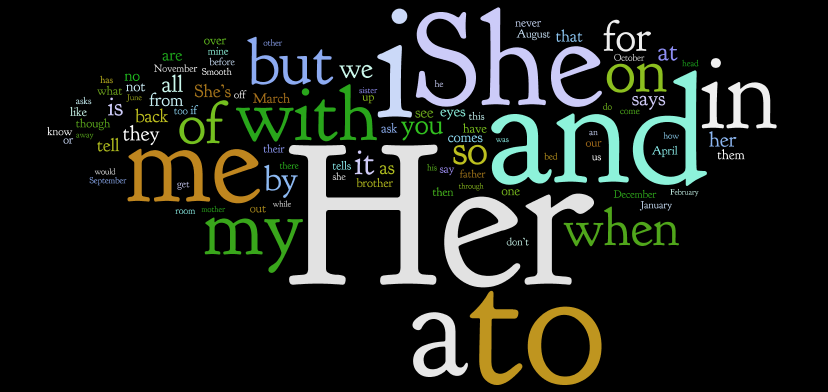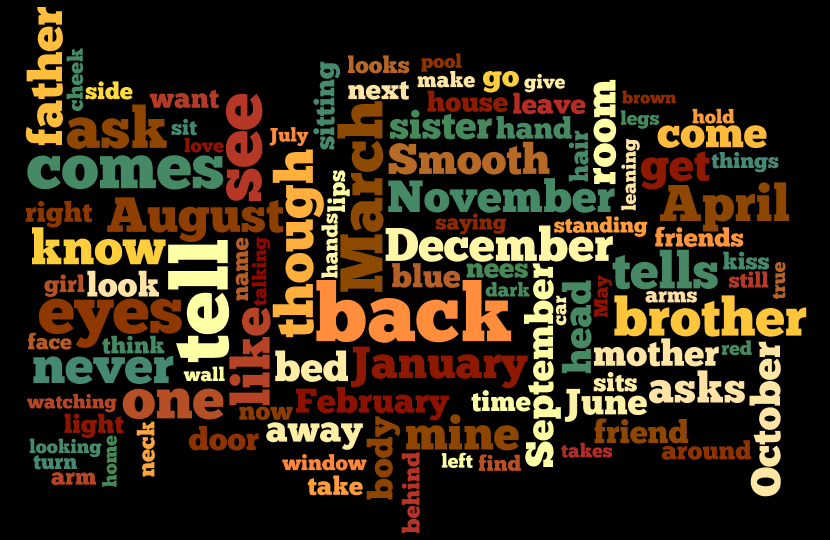here is a worlde reading of one my poetry projects. because i consider “the common english words” to play a pivotal role in the work, i decided it should be included. the word “Her” actually appeared more frequently in the text, than “the.” In the attached picture i was able to cut out “the” so to put more emphasis on the other words. this alternative method of actually ‘reading’ my own poetry brought forth many aspects of the work that i either was not aware of, or would not admit to. for instance, my choice of words prove the work to by quite lyrical. In some sense even clique.
in the following picture, i removed the “common words” and was surprised to see a few things. to begin with, the months that are part of the poems chronological titles seem to play a larger role in this reading. now i see the work to be a lot more confined to a temporal framework that i had assumed.
my preoccupation with the human frame, also, easily comes through, with words such as: body, eyes, face, hand, arm, arms, legs, cheek, hair and so on.
another aspect that surprised me was a domestic undertone, with words like brother, father, sister, and mother, which i had otherwise not intended nor noticed.
the first rendition of the words, including the common words, it self looked like a poem. i unfortunately lost the image, but it even made syntactic sense.


One reply on “Wordle Poetry”
This is an interesting experiment that points to the value of visualization for writers and readers. As Moretti suggests, “distant reading” allows us to attend to features of the text we might not otherwise have noticed, just as climbing the Grouse Grind allows us to see patterns of Vancouver which are obscured when we are “in medias res.”
You raise an important issue: how are stop words defined? The field of computational linguistics differentiates between “stop words” and “content words,” and many visualization tools provide common stop-word lists for ease of use. Wordle does so. Of course, there are many possible stop-word lists (for different languages, genres, etc). One does not need to use a stop-word list, and one can define a set of stop words in any advanced text analysis tool. As intimated above, what constitutes a stop word invariably differs from discipline to discipline and from genre to genre. I recall reading, for example, that “from,” which is included in many common stop-word lists, is a content word in Airline and Real Estate literature. So individuals doing text analysis in those disciplines need to set their stop-word list to include “from” (and perhaps “to” in the case of airline literature). Individuals doing text analysis with lyric poetry would certainly not want to use a predefined common stop-word list for informational prose.
This discussion points to another possibility for Wordle: have students look at word frequency (including so-called “stop words”) across different genres.
Teresa